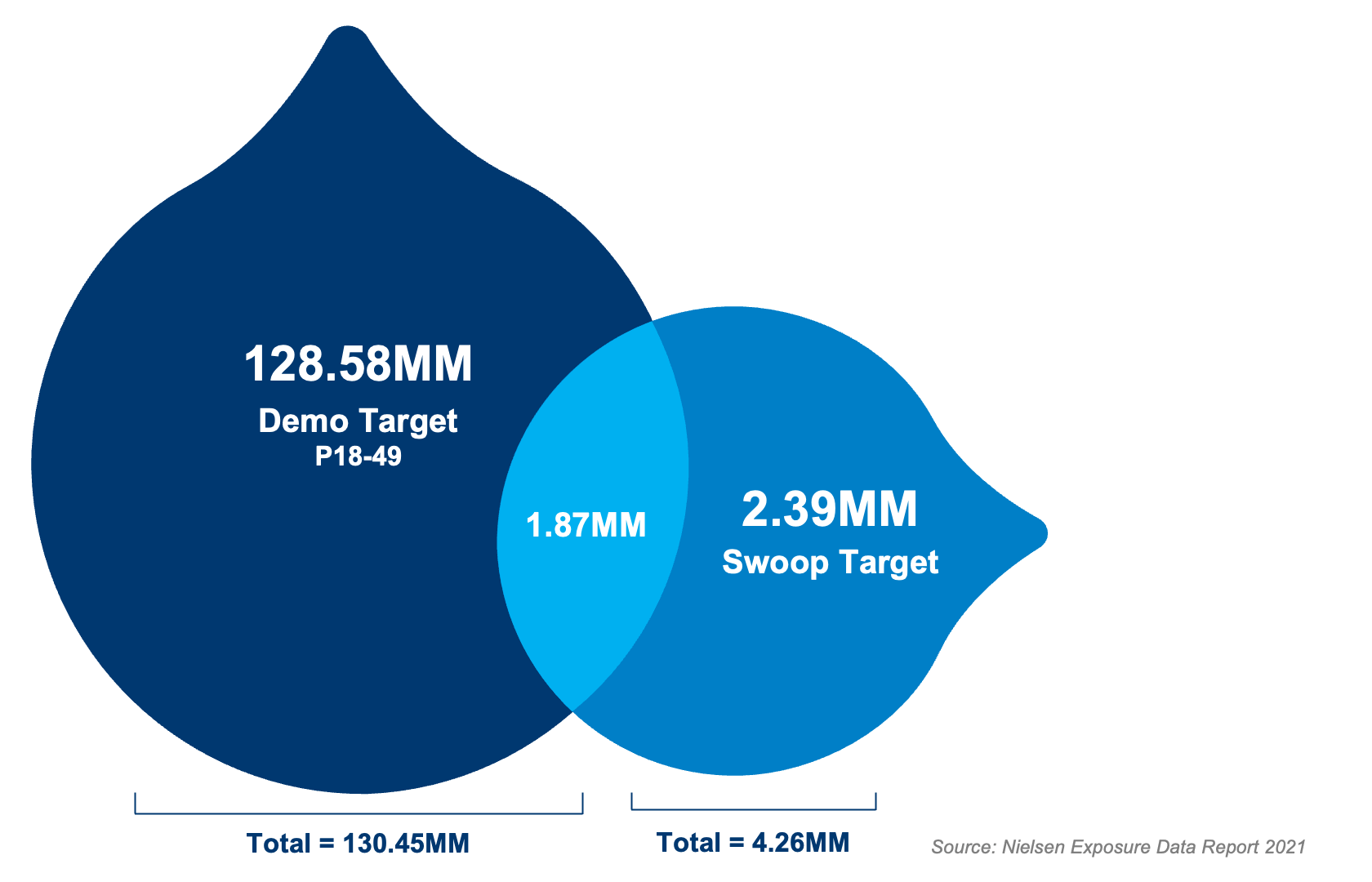One Audience, All Channels: Unifying Digital, Audio, and TV Targeting with Real World Data
By: [email protected], Content Manager, Swoop/IPM.ai
[email protected], Swoop’s SVP of Sales sat down with Marc Iskowitz, MM+M’s Editor-at-Large at the publication’s Media Summit. Carr explained how artificial intelligence (AI) transforms real world data (RWD) into precise custom audiences – enabling brands to increase patient and HCP engagement, driving script lift.
The four traditional targeting methods that pharmaceutical marketers have historically relied on aren’t precise enough to be impactful. Demographic data divides people into criteria such as age, gender, ethnicity and household income – though patterns do emerge among certain groups, these are still too broad to offer insight into health status, especially for rare or specialty conditions. Similarly, marketers who apply zip-nine targeting and reach out to customers based on location are unaware of their audience’s health.
Slightly better is off-the-shelf data, which is generic real world data – however, this isn’t as effective as a brand-specific custom segment and can also be used by competitors. Lastly, is behavioral data, or information collected from personal online usage, including cookies or social media. Although health marketers have become very reliant on this, it potentially allows users to be re-identified through their online ID, jeopardizing a brand’s integrity; it also isn’t necessarily indicative of a person’s health status.
While larger shifts in privacy policies across Apple, Facebook and Google have impacted the industry overall, Swoop’s data is completely anonymized through tokenization, ensuring patients and companies alike are protected. Aside from being HIPAA compliant, Swoop is an active member of the Network Advertising Initiative (NAI), which requires vendors who touch health data and market to patients to go through an annual approval process, adding an extra layer of security.
Privacy-safe doesn’t mean watered down results. Custom RWD-driven audiences are directly correlated with a higher audience quality, measurable by script lift via an independent third-party. If the right patients are marketed to, they will be motivated to follow through with their HCP, often resulting in a new prescription.
Real world data is defined as “offline data, and a combination of claims data — anything found on an insurance claim, such as a diagnosis code or prescription filled,” says Carr.
Swoop uses de-identified data, without any knowledge about the patient, to build custom audiences. This differs from other data providers that start with a seed audience, do look-alike modeling, and then get rid of the audience they started with – which negatively impacts audience quality.
Once a brand-specific audience segment is created it can be used in any channel. “You can run it across programmatic as a simple way to start, then you could go to CTV and maybe audio, which is growing very quickly. You might want to look at addressable media,” she continues, noting the process is seamless. “A lot of agencies are leveraging our data for overall planning. You allow the data to identify the channels, and then use the same data to target patients within those channels.”
Clients experience near immediate results when using custom RWD. “An advertiser was concerned about going into data driven linear (DDL) television. It buys 60- and 90-second spots and believed that adding real world data would limit its ability to buy inventory. In a study, Swoop uncovered 56% more of its audience than it had found through age and gender demo planning.”
Iskowitz questioned “why a single audience built with AI and real world data should be leveraged across planning, activation and measurements?”
“Using the same data allows you to be consistent with the patient market you’re targeting and more efficient with your media dollar,” she replied. “If we truly believe this is the highest-performing data, why not leverage it across the entire media net?”
Carr then delved into marketing to HCPs. “A traditional NPI [National Provider Identifier] list fails to recognize the effect physicians have on other physicians. We use claims data and other data assets to expand on that NPI list and find influential physicians for advertisers to target.”

If you want to know more about implementing an exclusive audience, consider these three points:
- Don’t be concerned about using real world data because of privacy; offline data is safer than any online data that’s attached to an ID.
- Don’t be concerned about cost. Swoop does not charge to build a custom audience upfront, and there are no additional fees.
- If you’re not using real world data because you don’t know enough about it, get in touch with us at [email protected] to learn more.
Watch the full conversation between [email protected] and Marc Iskowitz, below.


